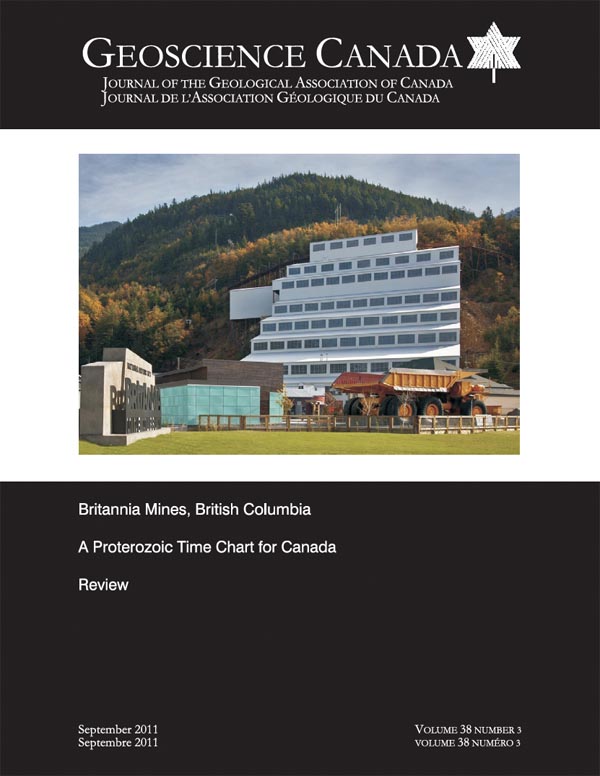Abstract
Britannia was discovered in 1888, began production in 1905, and after nearly 70 years of underground operation produced more copper than any other mine in British Columbia. At one time it was the largest copper mine in the British Empire. Britannia survived the Great Depression, labour shortages brought on by two world wars, and several natural disasters. For most of its life Britannia was owned by the Howe Sound Company of New York, which was formed in 1903 for the purpose of financing the development of the mine. In 1963 it was purchased by Anaconda Canada Limited, which operated the mine until closure in 1974.
The Britannia camp encompassed eight separate ore zones located approximately 5 km inland from Britannia Beach. The deposits occurred within a large shear zone in a roof pendant of Mesozoic sedimentary and volcanic rocks enclosed by the Coast Plutonic Complex. Until a few years before mining ceased, the deposits were believed to have been emplaced in structurally favourable sites by hydrothermal fluids; the most recent interpretation of the deposits invokes a VMS model.
During the mine’s lifetime, thousands of people worked at Britannia, and they and their families lived in one of two company towns that, until 1956, were accessible only by coastal steamer. After closure, the community of Britannia Beach faced the prospect of becoming a mining ghost town, and the distinction of being the site of an environmental hazard created by acid mine drainage. A solution to the pollution problem was found, and road access to Vancouver combined with the success of the Britannia Mine Museum, a highlight of which is the surviving and spectacular mine concentrator that has been designated a National Historic Site, have given Britannia Beach a promising future.
Britannia is historically important from a mining technology viewpoint because it was the first mine in BC to successfully employ froth flotation. It was economically significant because it was an important element in BC’s emerging economy and it is culturally significant because the Britannia communities represented a way of life that was typical of many Canadian mining towns in the first half of the 20th century. Moreover, Britannia Beach has survived and has become a well established community. Additionally, the recent history of Britannia Beach illustrates the importance of environmental considerations related to mine closure.
SOMMAIRE
La mine Britannia a été découverte en 1888, elle a débuté sa production en 1905 et, en près de 70 ans d'exploitation souterraine elle a produit plus de cuivre que toute autre mine en Colombie-Britannique. À une époque c’était la plus grande mine de cuivre de l'Empire britannique. Britannia a survécu à la Grande Dépression, aux pénuries de main-d’œuvre provoquée par les deux guerres mondiales, ainsi qu’à plusieurs catastrophes naturelles. Pour la majeure partie de son existence, Britannia a été la propriété de la société Howe Sound de New York, laquelle a été formée en 1903 dans le but de financer la mise en valeur de la mine. En 1963, elle a été achetée par Anaconda Canada Limited, laquelle a exploité la mine jusqu'à sa fermeture en 1974.
Situé à environ 5 km de la côte de Britannia Beach, le camp minier de la Britannia était constitué de 8 zones minéralisées distinctes. Les gisements étaient situés dans une grande zone de cisaillement située dans le toit d’une unité de roches volcano-sédimentaires mésozoïques du Coast Plutonic Complex. Quelques années avant la fin de l’exploitation, on croyait encore que les gisements avaient été mis en place par la migration de fluides hydrothermaux dans des pièges structuraux favorables, mais
l'interprétation la plus récente suggère plutôt une mise en place selon le modèle des SMV.
Tout au long de son exploitation, des milliers de personnes ont travaillé à la mine Britannia et ces travailleurs et leurs familles demeuraient dans l’une des deux villes de compagnie; notons que l’endroit n’était accessible que par un vapeur côtier jusqu’en 1956. Après la fermeture de la mine, la ville de Britannia Beach a bien failli devenir une ville fantôme avec la réputation de constituer une menace pour l’environnement étant donné les effets du drainage acide des résidus miniers. Mais grâce à la solution qui a été appliquée, à la route qui a été construite jusqu’à Vancouver et au succès du musée de la mine Britannia avec son spectaculaire concentrateur, lequel a pu être préservé et qui a été désigné lieu historique national, Britannia Beach peut maintenant être confiante en l’avenir.
Du point de vue technologie minière, la mine de Britannia est importante historiquement en ce qu’elle fut la première mine de C.-B. qui ait employé avec succès le procédé de séparation de flottation par mousse. Économiquement elle fut un élément majeur de l’économie émergente de la C.-B. Les communautés de la Britannia sont importante culturellement aussi en ce qu’elles représentent un mode de vie typique des villes minières canadiennes de la première moitié du 20e siècle. Qui plus est, la ville de Britannia Beach a subsisté au-delà de son épisode minier et est devenue une communauté autonome. L’histoire récente de Britannia Beach montre bien qu’il est important de tenir compte des questions environnemen-tales liées à la fermeture d’une mine.
